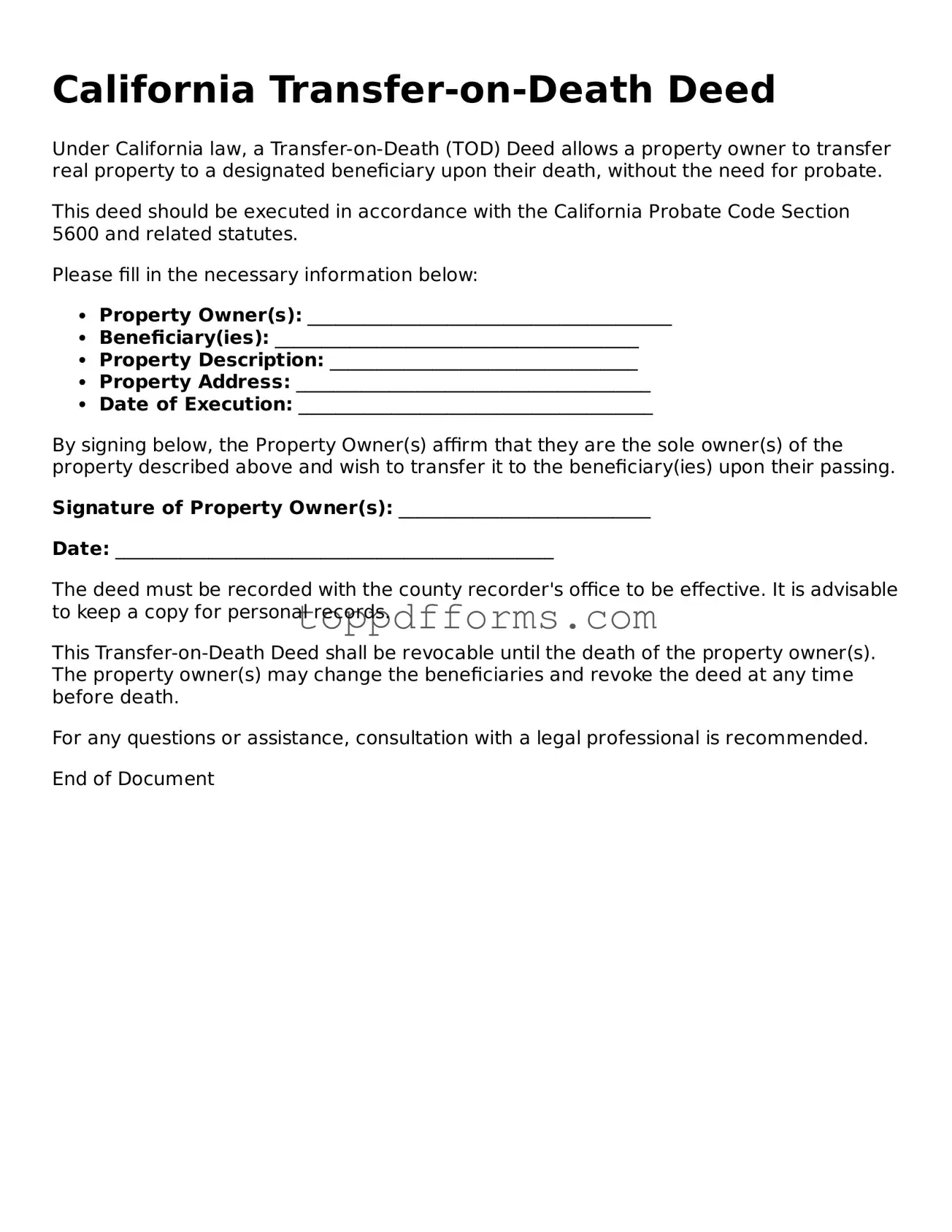What is a California Transfer-on-Death Deed?
A California Transfer-on-Death Deed is a legal document that allows a property owner to transfer real estate to a designated beneficiary upon the owner's death. This deed provides a straightforward way to pass on property without the need for probate, making the process simpler and often more cost-effective for heirs.
Who can use a Transfer-on-Death Deed in California?
Any individual who owns real estate in California can utilize a Transfer-on-Death Deed. It is important to note that the property must be solely owned by the individual and not jointly owned or part of a trust. This deed is particularly beneficial for homeowners looking to ensure a smooth transition of their property to loved ones.
How do I create a Transfer-on-Death Deed?
To create a Transfer-on-Death Deed, you must complete a specific form provided by the California state government. This form requires details such as the property description, the owner's information, and the beneficiary's information. Once completed, the deed must be signed and notarized before being recorded with the county recorder's office where the property is located.
Is there a cost associated with filing a Transfer-on-Death Deed?
Yes, there may be fees associated with recording the Transfer-on-Death Deed. Each county in California has its own fee structure, so it is advisable to check with the local county recorder's office for the exact amount. Additionally, while there are no tax implications at the time of transfer, beneficiaries may need to consider property taxes once they inherit the property.
Can I change or revoke a Transfer-on-Death Deed after it has been created?
Absolutely. A Transfer-on-Death Deed can be revoked or modified at any time before the owner's death. To do this, the owner must create a new deed that explicitly revokes the previous one or file a revocation form with the county recorder's office. This flexibility allows property owners to adjust their plans as circumstances change.
What happens if the beneficiary predeceases the property owner?
If the designated beneficiary dies before the property owner, the Transfer-on-Death Deed becomes void. In such cases, the property owner may want to update the deed to name a new beneficiary. It is essential to keep the deed current to ensure that the property passes to the intended heir.
Are there any limitations on the type of property that can be transferred using this deed?
Yes, there are limitations. The Transfer-on-Death Deed can only be used for residential real estate, such as single-family homes or condominiums. It cannot be used for commercial properties, timeshares, or properties held in a business entity. Understanding these limitations is crucial for effective estate planning.
Do I need an attorney to create a Transfer-on-Death Deed?
While it is not legally required to have an attorney assist with the creation of a Transfer-on-Death Deed, consulting one can be beneficial. An attorney can provide guidance tailored to your specific situation and ensure that the deed complies with California laws, helping to avoid potential pitfalls.
Will a Transfer-on-Death Deed affect my ability to sell or mortgage the property during my lifetime?
No, a Transfer-on-Death Deed does not affect the owner's rights to sell, mortgage, or otherwise manage the property during their lifetime. The owner retains full control over the property until death, allowing for flexibility in financial decisions while still planning for the future transfer of the property.
